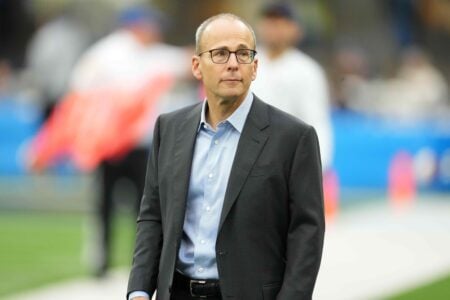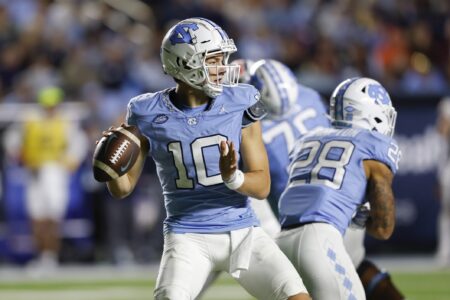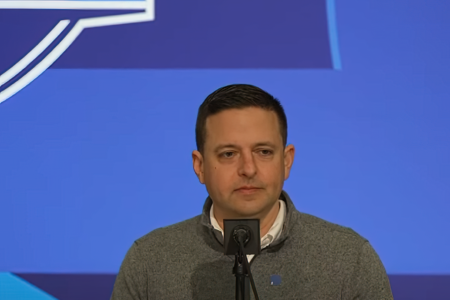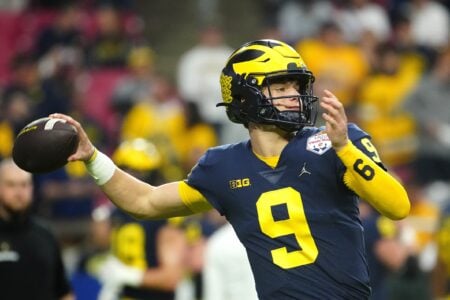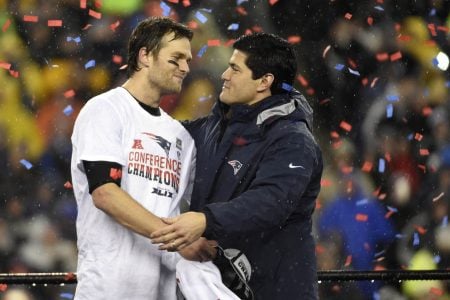So I went back and did a little research on the draft and found some interesting tendencies.
Going back about ten years, one of the most dependable trends is that your chances of getting a very good player drop off significantly after the middle of the second round. Oddly enough, the chances of a bust are about the same in picks 1-10 as they are in picks 20-30 and even 32-45 -- but your chances of a wasted pick rise exponentially after about pick 47.
Just look, year after year. In 2004 there were about 20-21 very productive players in round 1 (and the # of stars is only somewhat higher at the top of the round, which had the likes of Sean Taylor and Phillip Rivers, than it was at the bottom, where there were guys like Steven Jackson and Vince Wilfork), and about 6 or 7 very productive players in the first half of the second round (including guys like Bob Sanders, Karlos Dansby and Jake Grove). But after the first half of the second round, the talent level drops off sharply, and suddenly you have about a 1 in 5 chance of getting even a productive NFL player, to say nothing of a star player. By round 3 you're down to about 5 or 6 good NFL players in the whole round, and only a few of those guys really hit (ie Nick Hardwick, Chris Cooley, Darnell Dockett). Same thing in '07: about 20-21 very good players in round 1, and about 6 or 7 good players at the top of round 2 (including guys like Lamarr Woodley, David Harris, Tony Ugoh and Arron Sears). Then, after pick 48, the desert starts.
I went back and looked and it's like this virtually every year. It seems like after pick 46 or 47, the talent level drops off sharply. Before pick 47, you have about a 50% chance of getting an impact/longtime starter; after 47, the chances drop down to about 20% or less. And by the time you go beyond round 4, the chances drop to about 5-10% at best. It sounds like an obvious observation, but there are really several solid demarcations in the draft -- the middle of the second round (before which you have a good chance of getting a starter, after which you don't) and the end of the fourth round (before which you have a slim chance of getting a starter, after which you have almost no chance).
The reason I bring this up is I'm wondering about the Patriots' draft strategy this year. It seems like a sound course of action would be to either lump pick 89 and pick 59 together and move closer to the middle of the second round, or to sell pick #59 for a higher pick the next year. Because the overwhelming likelihood is that your best value is going to be the picks at 34 and 47, while the pick at 59 is not likely to be much more valuable than the picks at the bottom of the third round. Similar to the first round, where you're as likely to bust in the top 10 as you are at the bottom of the first round, historically speaking you're about as likely to bust at the bottom of round 2 as you are at the end of round 3.
Which means that pick at the bottom of round 2 that the Pats have is probably best traded -- either into next year or up this year.
Thoughts?
Going back about ten years, one of the most dependable trends is that your chances of getting a very good player drop off significantly after the middle of the second round. Oddly enough, the chances of a bust are about the same in picks 1-10 as they are in picks 20-30 and even 32-45 -- but your chances of a wasted pick rise exponentially after about pick 47.
Just look, year after year. In 2004 there were about 20-21 very productive players in round 1 (and the # of stars is only somewhat higher at the top of the round, which had the likes of Sean Taylor and Phillip Rivers, than it was at the bottom, where there were guys like Steven Jackson and Vince Wilfork), and about 6 or 7 very productive players in the first half of the second round (including guys like Bob Sanders, Karlos Dansby and Jake Grove). But after the first half of the second round, the talent level drops off sharply, and suddenly you have about a 1 in 5 chance of getting even a productive NFL player, to say nothing of a star player. By round 3 you're down to about 5 or 6 good NFL players in the whole round, and only a few of those guys really hit (ie Nick Hardwick, Chris Cooley, Darnell Dockett). Same thing in '07: about 20-21 very good players in round 1, and about 6 or 7 good players at the top of round 2 (including guys like Lamarr Woodley, David Harris, Tony Ugoh and Arron Sears). Then, after pick 48, the desert starts.
I went back and looked and it's like this virtually every year. It seems like after pick 46 or 47, the talent level drops off sharply. Before pick 47, you have about a 50% chance of getting an impact/longtime starter; after 47, the chances drop down to about 20% or less. And by the time you go beyond round 4, the chances drop to about 5-10% at best. It sounds like an obvious observation, but there are really several solid demarcations in the draft -- the middle of the second round (before which you have a good chance of getting a starter, after which you don't) and the end of the fourth round (before which you have a slim chance of getting a starter, after which you have almost no chance).
The reason I bring this up is I'm wondering about the Patriots' draft strategy this year. It seems like a sound course of action would be to either lump pick 89 and pick 59 together and move closer to the middle of the second round, or to sell pick #59 for a higher pick the next year. Because the overwhelming likelihood is that your best value is going to be the picks at 34 and 47, while the pick at 59 is not likely to be much more valuable than the picks at the bottom of the third round. Similar to the first round, where you're as likely to bust in the top 10 as you are at the bottom of the first round, historically speaking you're about as likely to bust at the bottom of round 2 as you are at the end of round 3.
Which means that pick at the bottom of round 2 that the Pats have is probably best traded -- either into next year or up this year.
Thoughts?
Last edited:





